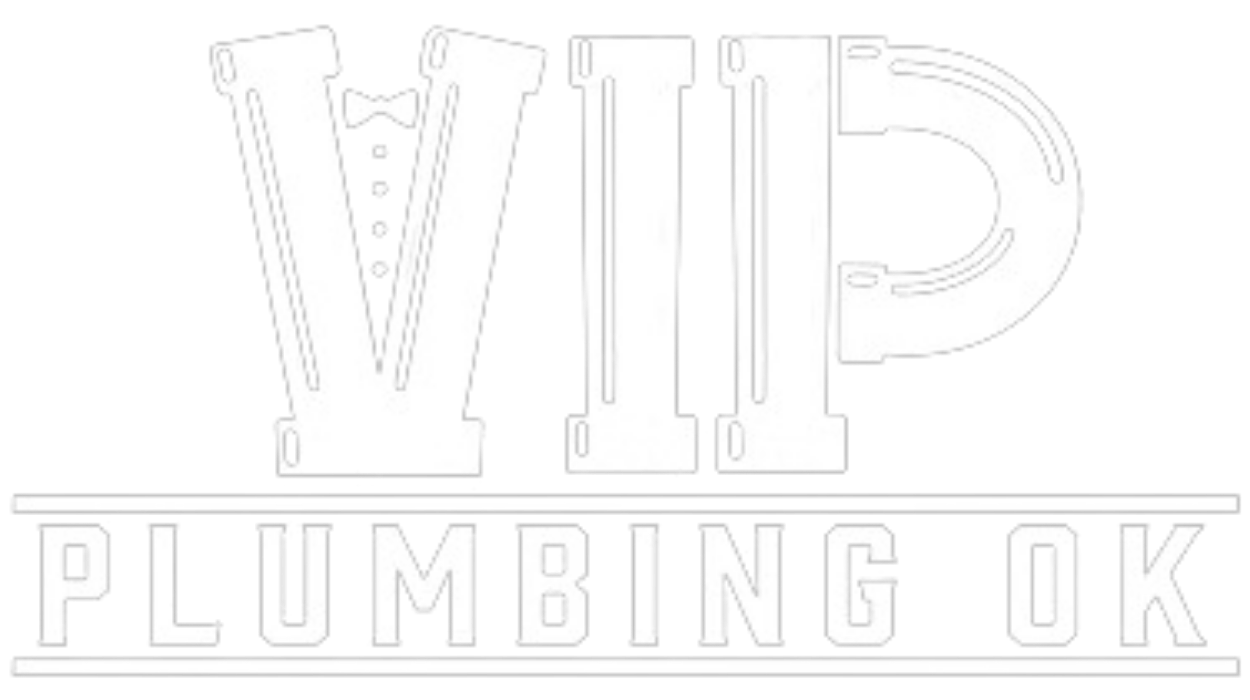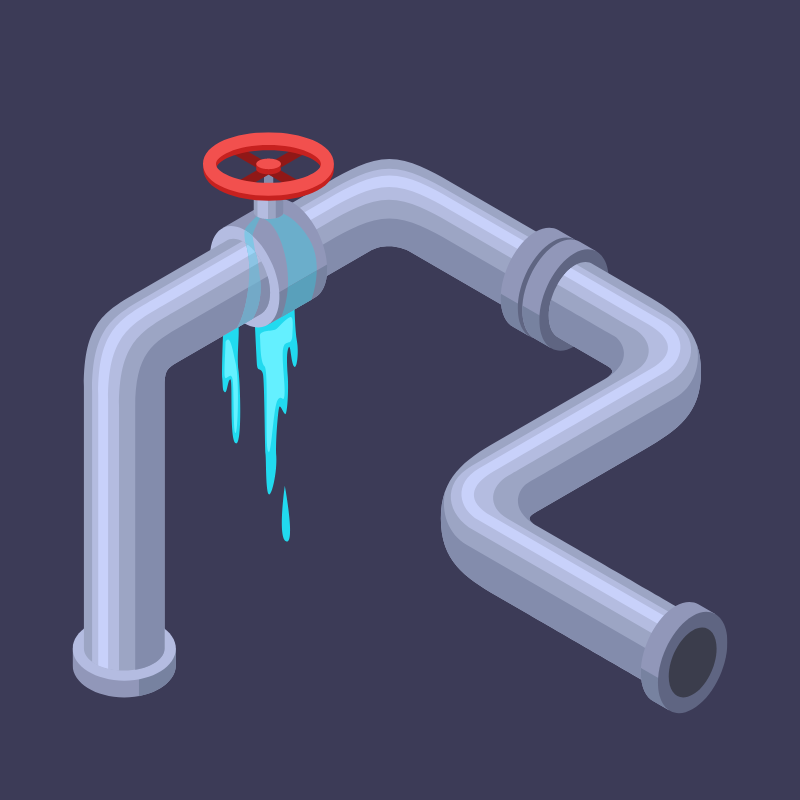Slab leaks are serious issues that can lead to significant damage in your home if not detected and addressed promptly. They occur in the plumbing lines running beneath a home’s concrete foundation and can cause extensive structural damage, health problems, and costly repairs. In this article, we will look at the causes, signs, and preventive measures a homeowner can engage in to slow or stop the formation of slab leaks. It is crucial for homeowners to learn about the dangers of slab leaks to protect their property and maintain a safe living environment. Slab leaks are considered plumbing emergencies, so never take them lightly.
Causes of Slab Leaks
Slab leaks can be caused by various factors, often relating to the plumbing materials used during initial construction, environmental conditions, and the wear and tear on plumbing systems. Here are some common causes of slab leaks to help increase your awareness.
Poor Construction Quality
Substandard construction practices, such as improperly laid pipes or less-than-average plumbing materials, can lead to slab leaks. Over time, the pipes begin to deteriorate and leak. The detection of slab leaks is difficult because the pipes are hidden from view and it takes time for the signs to appear.
Corrosion
Water pipes, especially those made of copper or galvanized steel, can corrode over time due to the chemical reactions between the metal and the hard water minerals found in the water of many US homes. This corrosion deteriorates the pipe lining and can create small holes or cracks in the pipes, leading to leaks.
Abrasion
Not all corrosion occurs inside the pipe. Pipes that rub against concrete, gravel, or other rough materials can wear down the exterior lining of plumbing pipes over time. The constant friction can eventually degrade the pipe exterior and cause the pipes to develop leaks.
Pressure Changes
Sudden changes in water pressure can stress the plumbing system and cause leaks.
Pressure changes can come from municipal water supply issues or can occur due to a burst pipe or a faulty pressure regulator. High water pressure places stress on pipe joints and interior walls and leads to leaking.
Soil Shifts
Natural movements in the soil, whether from settling, earthquakes, or expansive clay soils that expand and contract with moisture levels, can put pressure on the home’s foundation and the pipes that travel through the slab. This either constant or sudden shift in the soil can remove the supporting ground holding the plumbing pipes in place. As they shift, they separate or crack and leak.
Tree Roots
One of the most common causes of a slab leak is intruding tree roots that seek moisture and nutrient-rich sewage inside sewer lines. Roots from nearby trees can quickly grow into the plumbing system, blocking the flow of wastewater, cracking or displacing pipes, and causing leaks.
Signs You Have a Slab Leak
Detecting a slab leak early is essential to prevent extensive damage. As we already noted, finding slab leaks can be difficult. Here are some signs that you might have a slab leak.
Unexplained Water Bills
A sudden increase in your water bill without a corresponding increase in water usage can indicate a leak. If you just filled your swimming pool or started up your irrigation system for the summer, the increase in usage is apparent. When no additional water was used, but your bill spiked, a slab leak should be expected.
Water Stains or Wet Spots
Look for water stains or damp spots on your floors, carpets, or walls, especially in the lower levels of your home. As water leaks out of plumbing pipes it is quickly absorbed by the surrounding drywall and insulation, leaving behind stains and wet areas.
Warm or Cold Spots
Uneven temperature spots on your floor can indicate a hot or cold water leak beneath the slab. Hot water lines are particularly susceptible to slab leaks so warm areas on the floor should be investigated immediately.
Mold and Mildew
One of the most serious consequences of a slab leak is mold and mildew growth. Excess moisture from a slab leak can lead to growth hidden in a home’s darkest recesses. Mold quickly multiplies, and the spores become airborne, leading to inhabitants inhaling the spores and causing severe respiratory illnesses.
Sound of Running Water
When a plumbing pipe breaks, you may hear the sound of running water. Hearing water running when all faucets are off often indicates a slab leak is in progress. Turn off the water to your home immediately and call for professional help.
Decreased Water Pressure
If you notice a drop in water pressure, it could be due to a leak in the pipes under the slab. Of course, there are other causes of low water pressure but always consider a slab leak first because the damages resulting from a slab leak are dire.
How Best To Prevent Slab Leaks
Preventing slab leaks involves proactive measures to protect your plumbing system and foundation. Here are some strategies to help prevent slab leaks, which should be strictly enforced.
Regular Inspections
Have a professional plumber inspect your plumbing system regularly to detect early signs of wear and tear or potential problems. Even if a slab leak is not in progress, early signs of pipe wear and tea can be identified and monitored so an emergency does not develop.
Water Pressure Regulation
Ensure that your water pressure is within a safe range. For residential water, the pressure should fall between 40 and 80 PSI. If it is in excess of 80 PSI, it can strain your pipes and lead to leaks. Install a pressure regulator and monitor its accuracy on an ongoing basis.
Quality Materials
Use high-quality, corrosion-resistant materials for your plumbing system. This can help reduce the likelihood of leaks due to material degradation. It is sometimes tempting to cut costs when buying plumbing supplies, but this is not an area where costs should be negotiated.
Proper Installation
Not only are quality plumbing materials essential to a home’s plumbing system but ensuring that your plumbing system is installed correctly by qualified professionals is an absolute must! Proper installation can prevent issues like abrasion and improper pipe placement.
Soil Management
Manage the soil around your foundation to prevent excessive shifting. This might include proper landscaping, correct sloping of the soil, moisture control, and foundation support to protect it from strain.
Tree Root Barriers
If you have trees near your home, especially close to sewer and water lines, consider installing root barriers to prevent roots from interfering with your plumbing system.
Leak Detection Systems
There is no better way to be alerted of a plumbing leak than a leak detection device. Install leak detection systems that can alert you to leaks early, allowing you to address them before they cause significant damage. With Smart technology, these detection devices can signal a problem to your smartphone or tablet.
Looking For Slab Leak Detection To Protect Your Home And Your Health?
Slab leaks pose a serious threat to the structural integrity of your home and can lead to costly repairs if not addressed promptly. By understanding the causes, recognizing the signs, and taking preventive measures, homeowners can protect their properties from the dangers of slab leaks. Regular inspections, proper installation, and proactive maintenance are key strategies in preventing slab leaks and ensuring the longevity of your home’s plumbing system. If you suspect a slab leak, contact us immediately to assess and repair the issue, safeguarding your home and your peace of mind. We are experts at locating and repairing slab leaks so give us a call today!

